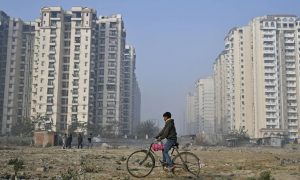As India advances toward becoming the world’s third-largest economy, cities are set to play a pivotal role in the nation’s growth. By 2050, it is projected that nearly 100 Indian cities will have populations exceeding one million, in addition to the current eight mega-cities. Key drivers of this urban expansion include infrastructure development, digitisation, tourism, and evolving office dynamics.
To assess their real estate attractiveness and growth potential for the next five to six years, Colliers India has analysed over 100 emerging cities in its latest report, “Equitable Growth and Emerging Real Estate Hotspots.” From this pool of over 100 cities, 30 emerged as high-potential growth centres. Notably, 17 of these cities are expected to witness accelerated real estate development across three or more asset classes.
The 17 emerging real estate hotspots are spread across the country. They are Amritsar, Ayodhya, Jaipur, Kanpur, Lucknow, and Varanasi in the North; Patna and Puri in the East; Dwarka, Nagpur, Shirdi, Surat in the West; and Coimbatore, Kochi, Tirupati, Visakhapatnam in the South and Indore, says Colliers India report.
With development across property types like offices, warehousing, tourism, residential, and senior living driving, these cities are expected to witness accelerated growth and play a crucial role in India’s economic growth, the Colliers India reported.
Badal Yagnik, Chief Executive Officer, Colliers India says “Smaller towns are emerging as dynamic contributors to India’s economy, driven by improved infrastructure, affordable real estate, skilled talent, and government initiatives. This growth is set to propel the real estate sector to an estimated USD 1 trillion by 2030 and potentially US$ 5 trillion, a 14-16% share in GDP by 2050. Significant momentum is expected across residential, commercial, retail, hospitality, and industrial segments. Additionally, alternate asset classes such as data centres, senior living, and second homes are also poised for significant activity in these emerging real estate hotspots.”
Read More: Property Indexation Benefits, Steady Repo Rate To Benefit Homebuyers and Sellers: Experts
Infrastructure is a key catalyst: Infrastructure development continues to be a crucial driver for real estate growth across India. Enhanced connectivity and increased manufacturing activity, fueled by initiatives like the National Infrastructure Pipeline (NIP) and PM GatiShakti, are projected to extend growth beyond Tier I cities, stimulating activity, particularly in warehousing and residential sectors, according to the report. Moreover, Colliers India’ report took into account factors such as proximity to key infrastructure projects and warehouse densities.
Evolving work models are also a factor: The rise of hybrid work is encouraging companies to adopt a hub-and-spoke model, establishing satellite offices in smaller towns. Cities like Coimbatore, Indore, and Kochi are emerging as potential office markets due to a combination of factors including skilled talent, infrastructure, and proximity to established office hubs. Vimal Nadar, Senior Director & Head of Research at Colliers India, commented, “The growing presence of tech companies and start-ups in emerging hubs is set to drive transformative growth in both office and residential markets. The relatively lower office rental costs and affordable housing in these areas create a favourable environment for both companies and employees.”
Read More: DDA to offer 173 premium flats in Dwarka at a starting price of Rs 1.28 crore
Digital transformation to drive demand for warehousing, and data centres: Increased digitisation will drive demand for warehousing, fulfillment centers, and data centers. Cities like Jaipur, Kanpur, Lucknow, Nagpur, Patna, Surat, and Visakhapatnam are expected to witness heightened digitization-driven real estate activity.
Spiritual tourism: Bolstered by the Union government, spiritual tourism policies and infrastructure improvements, are poised to further propel growth in temple towns. Cities such as Amritsar, Ayodhya, Dwarka, Puri, Shirdi, Tirupati, and Varanasi are expected to benefit from increased tourism and associated real estate development in the hospitality and retail sectors.





































